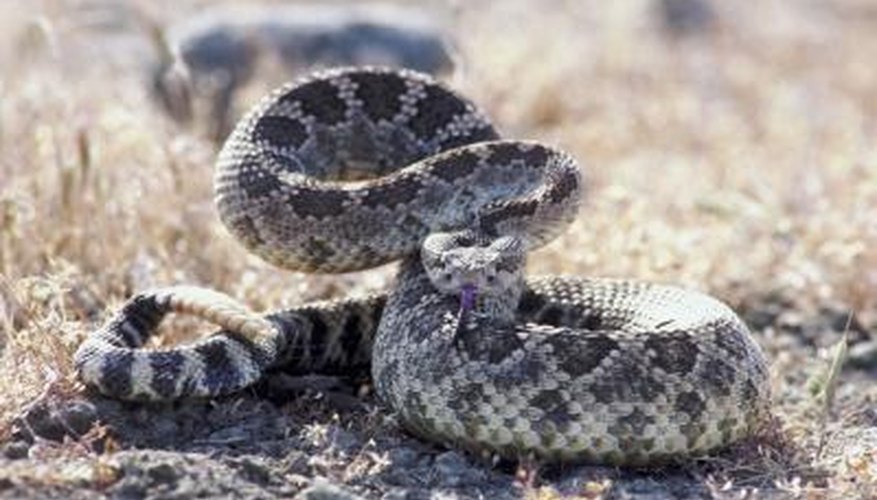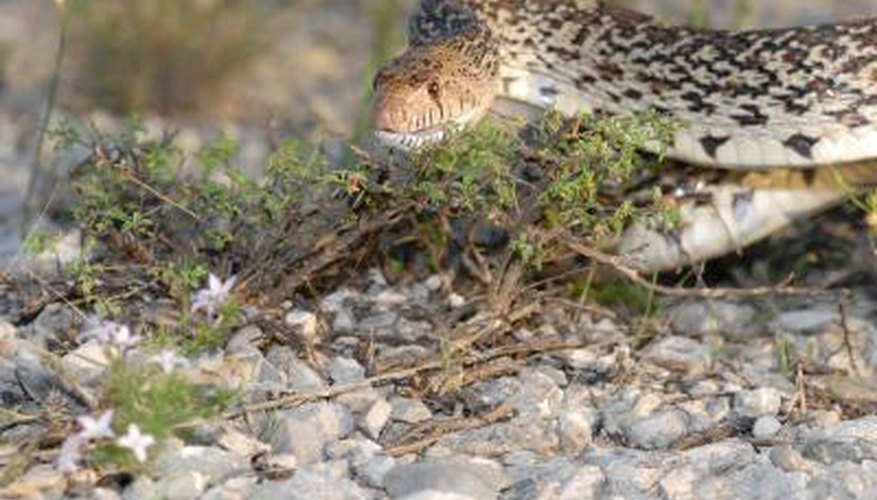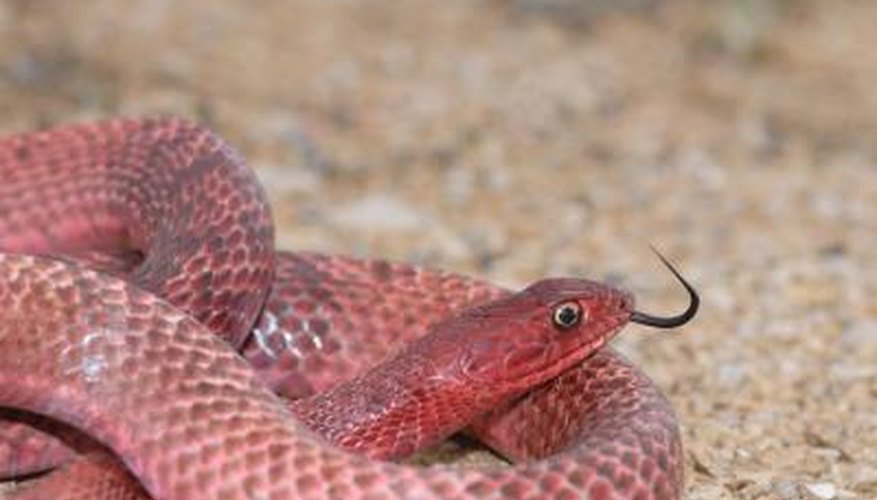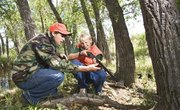
Snake hunting provides an unparalleled recreational activity for outdoorsmen, naturalists and nature photographers. Snakes are generally shy, solitary creatures, except during the winter when some species hibernate communally in "dens." Unfortunately, some hunters take advantage of this communal denning behavior to capture and eradicate venomous species--this type of hunting activity has had devastating impacts on Texas' native snake populations in many areas. Hunter education is the key to preserving Texas' native snake fauna.
Snakes of Texas

Wirepec/iStock/Getty Images
Texas boasts an incredible diversity of snake species. Texas is home to 73 species of native snakes, belonging to four families. Only 11 of these species are venomous--one coral snake and 10 pit vipers, including the copperhead, cottonmouth and eight rattlesnake species. Two species of non-venomous snakes are endemic to Texas, meaning they are found only in this state--the Brazos watersnake (Nerodia harteri) and the Concho watersnake (Nerodia paucimaculata).
Field Herping

Dean_Fikar/iStock/Getty Images
Herpetologists and other naturalists from around the world enjoy "field herping" in Texas, due to the great diversity of snakes. Field herping is an environmentally friendly type of snake hunting, similar to the practice of "catch and release" fishing. Field herpers search for new or rare species to add to their "life list"--a list of all of the species they have been fortunate enough to encounter and photograph in the wild. Field herpers share photographs through online forums, and provide invaluable data to academic researchers and other wildlife professionals.
Rattlesnake Roundups

Tom Tietz/iStock/Getty Images
Rattlesnake roundups provide entertainment for large crowds of spectators in Texas each year, with at least seven active roundups across the state. Thousands of snakes are captured and brought to these festivals, and prizes are given for the largest snake or greatest number of snakes per hunter. Unfortunately, approximately 15 percent of all rattlesnakes captured for roundup events in the United States are intentionally killed as a result of a lack of education. Historically, Texans have viewed rattlesnakes as a threat to human health. However, modern medicine provides effective treatment for venomous snakebites, and deaths are extremely rare. As a result of education and negative attention from the media, some communities have transformed their rattlesnake roundups into educational events in which no rattlesnakes are harmed.
Snake Hunting Laws

Rusty Dodson/iStock/Getty Images
Snakes are considered non-game wildlife in Texas, and are not protected by law. However, it is unlawful to capture any species of wildlife on public lands without a permit, or along roadways and road edges. In addition, protected species of wildlife may not be captured or possessed without a special permit from the Texas Parks and Wildlife Department.
Threatened and Endangered Snakes

Rusty Dodson/iStock/Getty Images
Texas law protects 13 species of snakes which are considered to be threatened with or in imminent danger of extinction of local populations or of the species as a whole. These threatened and endangered species are protected by law from hunting or harassment. A complete, current list of the protected species of snakes in Texas is available on the Texas Parks and Wildlife Department website.
References
- American Society of Ichthyologists and Herpetologists: Rattlesnake Roundups
- Humane Society of the U.S.: Rattlesnake Roundup List
- Texas Parks and Wildlife Department: Fishing and Hunting Regulations--Nongame Wildlife
- Texas Parks and Wildlife Department: Endangered and Threatened Amphibians and Reptiles in Texas
Writer Bio
Emmalise Mac has been writing professionally since 2006 and her work has been published online, in newsletters, newspapers and scientific journals and in wildlife guidebooks. She has published on topics including wildlife, pets and pet health, science, gardening, outdoor activities and crafts. She holds Bachelor and Master of Science degrees in biology.



